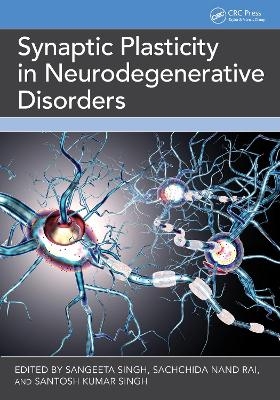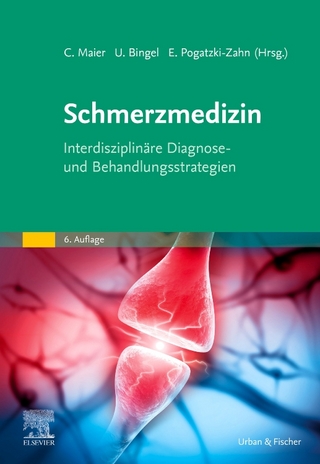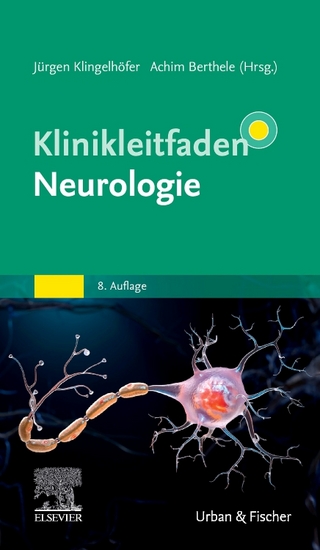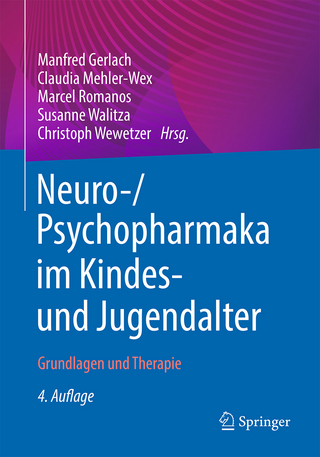
Synaptic Plasticity in Neurodegenerative Disorders
CRC Press (Verlag)
978-1-032-73528-3 (ISBN)
- Lieferbar (Termin unbekannt)
- Versandkostenfrei innerhalb Deutschlands
- Auch auf Rechnung
- Verfügbarkeit in der Filiale vor Ort prüfen
- Artikel merken
This book explores the pivotal role of synaptic plasticity in the pathogenesis, progression, and potential treatment of neurodegenerative disorders. The initial chapter provides an in-depth understanding of the complexity and impact of neurodegenerative conditions. It discusses the association of mitochondrial dysfunction, epigenetic influences, and neuroinflammation with synaptic plasticity in neurodegenerative diseases. The following chapters review the dynamic changes that occur at the cellular and synaptic levels in Parkinson's Disease, Alzheimer's Disease, and Huntington's Disease, paving the way for innovative therapeutic strategies. Furthermore, the book presents various computational tools and methodologies essential for enhancing our understanding of synaptic plasticity. It examines the transformative role of artificial intelligence tools in addressing synaptic impairment across various neurodegenerative diseases. Towards the end, the book explores the role of synaptic impairment and computational neuroscience in understanding and potentially treating conditions such as multiple sclerosis and amyotrophic lateral sclerosis. With its multifaceted approach, this book serves as a useful resource for researchers, clinicians, and students in the fields of neuroscience, computational biology, and neurology.
Dr. Sangeeta Singh is an Assistant Professor in the Department of Applied Science at the Indian Institute of Informational Technology, Allahabad (IIIT A), Prayagraj, Uttar Pradesh (UP), India. Prior to joining IIIT Allahabad, she worked at the ICAR Indian Veterinary Research Institute in Izzatnagar, Bareilly (UP), India. She completed her Ph.D. in 2010. Dr. Singh's research interests include neurodegenerative disorders and regenerative medicine to promote neuronal repair and regeneration. She has received various research grants from the Science and Engineering Research Board (SERB) and the Department of Science and Technology, India. Dr. Singh has published more than 50 research articles in high-impact journals, in addition to contributing book chapters and conference proceedings. Furthermore, Dr. Singh serves as a reviewer for various reputable journals and is also a Life Member of various esteemed societies, such as the Indian Academy of Neurosciences (India), the Association of Microbiologists of India, and the Society for Biomaterials and Artificial Organs India. Dr. Santosh Kumar Singh is a Senior Scientist at the Centre of Experimental Medicine and Surgery (CEMS), Faculty of Medicine, Institute of Medical Sciences, Banaras Hindu University, Varanasi, India. He earned his Ph.D. from the Botany Department (Institute of Science), BHU, in 1998. In 2003, he served as a Visiting Scientist at the Department of Photosynthesis, Institute of Physical Biology, University of South Bohemia, Czech Republic. Dr. Singh has published more than 75 research articles in high-impact and reputable journals. His research primarily focuses on Drug Discovery and Development, Microbial Biotechnology, and Nanobiotechnology. Dr. Singh is a member of the Mycological Society of India, the Society of Biological Chemists, India, and the Society for Ethnopharmacology, Kolkata, India (SFE INDIA). He has served as a resource person in the Karyashala Training Course under the Accelerate Vigyan Scheme, SERB, and DST. Notably, he was awarded the "National Award for Outstanding Efforts in Science and Technology Communication through Innovative and Traditional Methods (2021)" by the Department of Science and Technology, Ministry of Science and Technology, Government of India. In 2020–2021, he also received the Order of Academic Excellence in Publication from the Institute of Medical Sciences, Banaras Hindu University, Varanasi. Dr. Sachchida Nand Rai is a Research Associate (ICMR RA) at the Centre of Experimental Medicine and Surgery, Institute of Medical Sciences, Banaras Hindu University (BHU), Varanasi. Dr. Rai completed his Ph.D. from the Biochemistry Department (Institute of Science), BHU. Before joining BHU as a Research Associate, he held a post-doctoral fellowship at the Centre of Biotechnology, University of Allahabad, Prayagraj, India. Additionally, he serves as an editorial board member for many renowned journals and has published several research articles in journals of high repute.
Chapter 1: General Introduction to Different Neurodegenerative Diseases Chapter 2: Chemical-Induced Parkinson’s Disease Model and Associated Therapeutic Strategies Chapter 3: Recent Advancement in the Treatment of Parkinson’s Disease Cellular Models Chapter 4: Relevance of Genetic Model and Linked Therapeutics in Parkinson’s Disease Chapter 5: Importance of Newer 3D Organoids Model Based Therapeutic Approach in Parkinson’s Disease Chapter 6: Chemical Induced Alzheimer’s Disease Model and Their Therapeutic Significance Along with Limitations Chapter 7: Advancement in the Genetic Model of Alzheimer’s Disease Chapter 8: Organoids and Alzheimer's Disease Chapter 9: Importance of Genetic Model in Huntington’s Disease Chapter 10: Natural Source of Drugs for Neurodegenerative Diseases Chapter 11: Limitations of Modelling in Different Neurodegenerative Diseases Chapter 12: Significance of 3D Organoid Model in Neurodegenerative Diseases Chapter 13: Recent Advancement in Therapeutics of Rare Neurological Disorders Chapter 14: Bio-Informatics Based Modeling in Different Neurodegenerative Diseases and Associated Therapeutic Strategies Chapter 15: Holistic Management of Diverse Neurodegenerative Diseases in Different Translational Models Chapter 16: Gene Therapy, OMICS Approaches, and Translational Neurodegenerative Models: Recent Advancements and Future Perspectives Chapter 17: Implication and Importance of Stem Cell Therapy in a Translational Model of Neurodegenerative Diseases
| Erscheinungsdatum | 28.11.2024 |
|---|---|
| Zusatzinfo | 18 Tables, black and white; 27 Line drawings, color; 27 Illustrations, color |
| Verlagsort | London |
| Sprache | englisch |
| Maße | 178 x 254 mm |
| Themenwelt | Medizin / Pharmazie ► Medizinische Fachgebiete ► Neurologie |
| Naturwissenschaften ► Biologie ► Humanbiologie | |
| Naturwissenschaften ► Biologie ► Zoologie | |
| Technik | |
| ISBN-10 | 1-032-73528-7 / 1032735287 |
| ISBN-13 | 978-1-032-73528-3 / 9781032735283 |
| Zustand | Neuware |
| Informationen gemäß Produktsicherheitsverordnung (GPSR) | |
| Haben Sie eine Frage zum Produkt? |
aus dem Bereich


